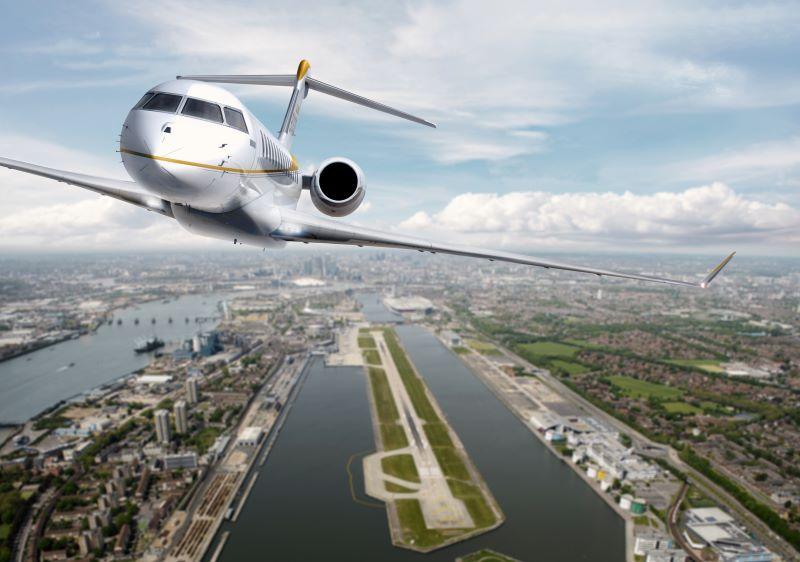
As NBAA-BACE gets underway, major business aviation manufacturers have a number of new programs under development ranging from a single-engine turboprop to ultra-long-range jets.
The aircraft are expected to enter service within the next five years.
The list does not include any programs that may be announced during the NBAA-BACE. Here is a look at those programs.
Bombardier Global 8000 ultra-long-range business jet: The Global 8000, based on Bombardier’s Global 7500, is a four-zone aircraft with a range of 8,000 nm, a top speed of Mach 0.94 and a 2,900 ft. cabin altitude at 41,000 ft. The program is on track for entry-into-service in the second half of 2025, the company says.
Gulfstream G800: Gulfstream debuted the G800, its longest-range aircraft to date, and G400 program in 2021. The G800’s flight test and certification programs are progressing well, officials say.
Gulfstream targets certification of the G800 nine months after certification of its ultra-long-range G700, which took place in March. That would bring G800 certification to the end of 2024 or early 2025. The G800 has a maximum range of 8,000 nm, up to four living areas and maximum speed of Mach 0.925.
Dassault Falcon 10X: Final assembly of the first ultra-long-range clean-sheet Falcon 10X is expected to begin in the second half of 2024 with deliveries slated to begin in 2027, officials say. Entry-into-service for the company’s flagship aircraft had previously been planned for late 2025 but supply chain disruptions and a “more meticulous” certification process following accidents involving Boeing aircraft are factors in the revised schedule. The jet has a range of 7,500 nm, a maximum certified altitude of 51,000 ft. and a top speed of Mach 0.925. Dassault’s Falcon 6X large, long-range business jet received FAA and EASA certification in August 2023. It entered service in November as a Dassault demonstrator with first customer deliveries commencing in February.
Gulfstream G400: Gulfstream’s G400 is the smallest member of its large-cabin family with a range of 4,200 nm and maximum speed of Mach 0.90. Gulfstream officials expect the prototype to make its maiden flight in the third quarter, “and I think we’ll be flying a pretty mature airplane,” Phebe Novakovic chairman and CEO of General Dynamics, Gulfstream’s parent company, told analysts in April. “The program is doing extremely well.” Certification will follow that of the G800. The company has earlier said it expected certification in 2025, but in April, Novakovic said, “I’m kind of out of the detailed predicting mode.”
Textron Aviation’s Citation Ascend: The company is moving forward with certification testing and has completed more than 125 flights and 350 flight hr. on the prototype aircraft. The midsize business jet, the latest of its 560XL family of aircraft, is expected to enter service in 2025. The Ascend will seat up to 12 passengers, have a maximum range of 2,100 nm and a maximum cruise speed of 441 ktas.
Honda Aircraft’s HondaJet Echelon: Honda Aircraft’s HondaJet Echelon single-pilot light jet, first named the HondaJet 2600 Concept, will have a range of 2,625 nm, maximum cruise speed of 450 kts and seating for up to 11. A preliminary design review has been completed and aircraft level critical design review is expected this summer, company officials say. Honda Aircraft expects first flight in 2026 and type certification in 2028.
Textron Aviation’s Beechcraft Denali single-engine turboprop: The company has begun the certification flight test phase of the program, following FAA Type Inspection Authorization in 2024. To date, the fleet of three flight test aircraft has completed nearly 2,000 flight hr. with more than 830 flights. FAA certification is expected in 2025, it says. The aircraft is expected to have a maximum range with four passengers of 1,600 nm, a maximum cruise speed of 285 ktas and seating for up to 11 occupants.
GE Aerospace’s Catalyst turboprop engine: GE Aerospace officials say it is on track for FAA certification of its new clean-sheet Catalyst engine by the end of 2024. The engine powers the Beechcraft Denali. Compared to other 1,300-shp powerplants, officials say the engine burns 18% less fuel and produces 10% more power at altitude. The engine includes Fadec engine controls, Garmin’s G3000 avionics and autothrottle and a single-lever power control.





